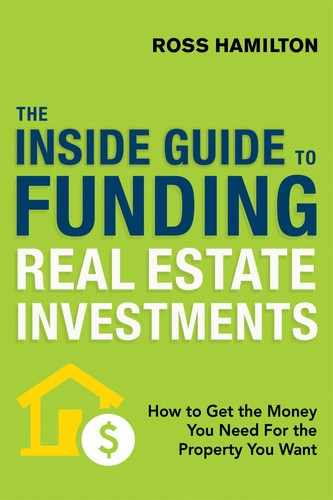INTRODUCTION
People get involved in real estate investing for a variety of reasons. For most, the motivator is financial gain whether it be through short- or long-term strategies, tax advantages, or any number of other underlying reasons.
There are a lot of different ways to make money in real estate investment—it’s the investor’s personal choice which “investment vehicle” to choose. Will it be residential properties, commercial properties, or something like land banking? It’s also a personal choice when it comes to investment strategy. Will it be fixing and flipping, renting homes or commercial property, or perhaps building new homes or commercial properties?
Regardless of the vehicle, the investor, or the strategy, there exists a set of common problems inherent in every real estate deal. Perhaps surprisingly, all real estate transactions follow a similar pattern. The common problems all investors face follow a pattern that goes something like this:
Find It. Not every property is a great choice for executing an investment strategy. Finding the really great deals, especially if you are a fix and flip investor, requires tenacity and resourcefulness. The same holds true for cash flow properties that are held for the mid- and long-term horizons. Not every house or every commercial property has the making of a great addition to a rental portfolio. Discovering the properties is the first step; the next step is the due diligence. Is the property truly profitable, and what warts does it come with?
Figure It. Once a potential investment property is discovered, the truth lies in the numbers and thorough due diligence. What problems need fixing? Are there title or other legal issues? Once your due diligence uncovers potential problems, the next question becomes can it make money as a fix and flip? You must have good information, accurate numbers, and the right formulas to figure that out. Is a property positioned to be a cash cow, providing monthly income and long-term benefits when held as a rental property? Again, due diligence and running the numbers are the key to sound decision making. Trip up here and there’s potential for short- and long-term losses. Once a winner is uncovered, the next most common issue that investors face is funding the property and/or project.
Fund It. After due diligence is completed, the numbers are in, and formulas figured, it’s time to determine the right kind of funding strategy for the property to meet the end goal. There are a variety of types of funding available for completely different purposes. Once the funding is in place, then you get to put the property to work as a fix and flip project, or perhaps a rental, or a development strategy.
Fix It. Rarely does an investment property change hands without some need for renovations or repositioning of some sort. Properties that are acquired at a great deal typically have more “potential” that needs to be realized. Usually the more warts a property has, the better the deal. For the fix and flip investor, this is where the money is made. But here’s where there’s an inherent problem. Most lenders don’t want to make loans on rundown properties in need of repairs or rental properties that aren’t performing. This book is designed to help you overcome the Fund It problem when there’s a need to Fix It.
Flip It. If you’ve been involved at all in real estate investing, you may have heard the saying, “You make your money when you buy, not when you sell.” The premise here is that the right purchase price has a huge impact on your overall profits. Fix and flip investors can’t rely on appreciation in the market since their holding times are short. And hoping that your renovation comes in under budget is a fool’s game. Successfully flipping properties is a numbers game, and the funding underlying the project can be a make-or-break proposition. Mismatched terms or rates that the property can’t support are a recipe for disaster. A great buy on a piece of real estate can be undermined by bad financing.
Real estate investors at any point in the journey, from finding a great investment property to cashing in on its potential, run into roadblocks. Most are obstacles that can be overcome, but funding is most often the “stop you in your tracks” roadblock.
This book is designed to assist real estate investors with navigating the road to effective funding—especially funding for short-term projects like fix and flip properties or buy and hold strategies with a need for immediate, shorter-term acquisition funding. It also includes valuable information on traditional funding, crowdfunding, and working with individual private money lenders to help real estate investors find the best funding for their particular property or project.
Chapter 1 begins with a broad overview of real estate investing, to help you understand the myriad of real estate investment opportunities out there. Chapter 2 is a big-picture look at the types of real estate investment funding available in the current market. From there, I walk you through the finer points of each type of real estate investment funding with a definite focus on working with asset-based lenders who specialize in real estate investment capital.
While I wrote this book with the residential property investor in mind, many of the concepts included here apply to commercial investing as well.
